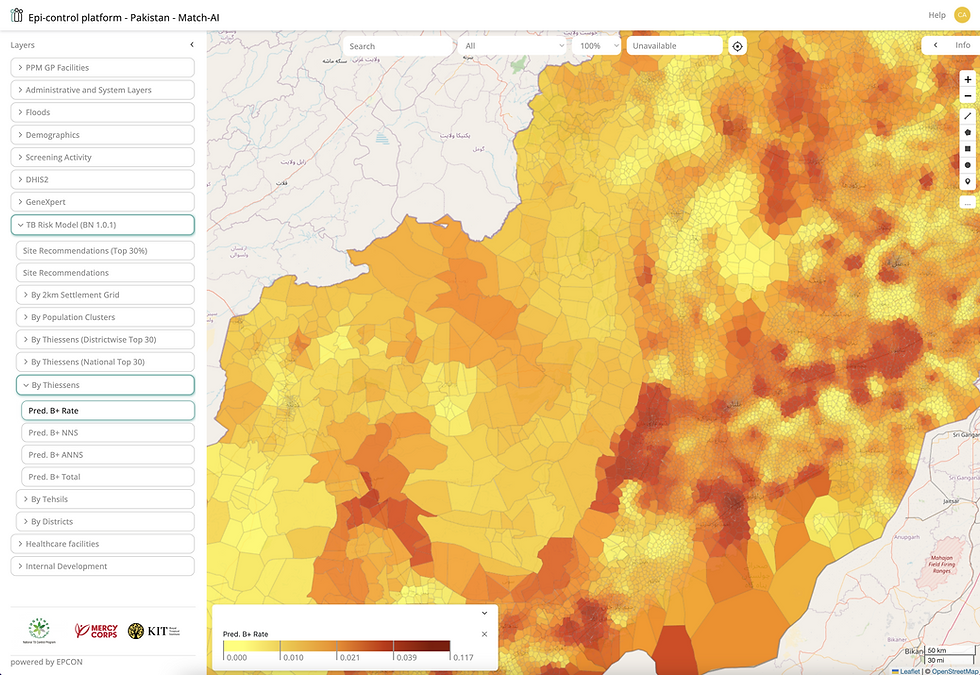Transforming Tomorrow: How AI is Revolutionising Disease Management
- Caroline Van Cauwelaert
- Mar 4
- 2 min read
In low-resource settings, accurately estimating disease burden has always been a daunting challenge. Traditional methods often falter in the face of incomplete, outdated, or fragmented data, leaving public health authorities ill-equipped to act swiftly or effectively. But a transformative shift is underway. Breakthroughs in AI are unlocking extraordinary potential – dramatically improving disease burden estimation and redefining how we monitor and respond to epidemics.

How is AI reshaping the future of disease management?
Smarter disease burden estimation
The integration of predictive health analytics into public health systems has significantly elevated our ability to estimate disease prevalence, severity, and distribution. But what exactly are predictive health analytics? According to the American Health Information Management Association, they involve data mining techniques and machine learning to make predictions about future outcomes by combining health records and contextual data for disease prediction. These tools offer deep, actionable insights – enabling a clearer picture of disease trends and hotspots before they escalate.
Real-time epidemic monitoring
AI-driven epidemic monitoring in low-resource settings enhances response times, potentially reducing the spread of diseases and improving public health outcomes. Our Epi-control platform, for example, processes vast streams of data in real time to deliver timely alerts and decision-ready insights to public health officials. This kind of immediate, intelligent monitoring holds the potential to reduce disease spread and save lives.
Optimised resource allocation
AI is also playing a pivotal role in ensuring that limited resources are deployed where they’re needed most. By analyzing variables such as hospital admissions, disease incidence, and seasonal patterns, AI enables healthcare systems to make informed decisions about resource placement. These data-driven health solutions not only enhance operational efficiency but also improve patient outcomes by ensuring timely access to critical care.
A recent JMIR article highlights that inequitable resource distribution has long been a driver of poor health outcomes – AI offers a promising solution, particularly during health emergencies.
Advancing epidemiological research
AI excels at uncovering hidden patterns in vast, complex datasets, fuelling innovation in the study of disease dynamics and intervention strategies. Through predictive healthcare technology and contextual health data analysis, AI supports proactive public health planning.
Our platform, for instance, has successfully detected diseases ranging from TB to Ebola using these approaches. In Nigeria, we identified vulnerable communities by cross-referencing simple yet powerful indicators – like literacy levels, sanitation access, and availability of clean water.
A smarter, fairer future for global healthLooking ahead, the use of AI in disease control programs presents a powerful opportunity to strengthen public health systems, especially in underserved areas. From more accurate disease burden estimation to faster, smarter interventions, AI is not just enhancing the tools we use; it is fundamentally reshaping how we protect health at scale. This is the dawn of a new era – one where data-driven decisions drive equity, efficiency, and impact across the global health landscape.


